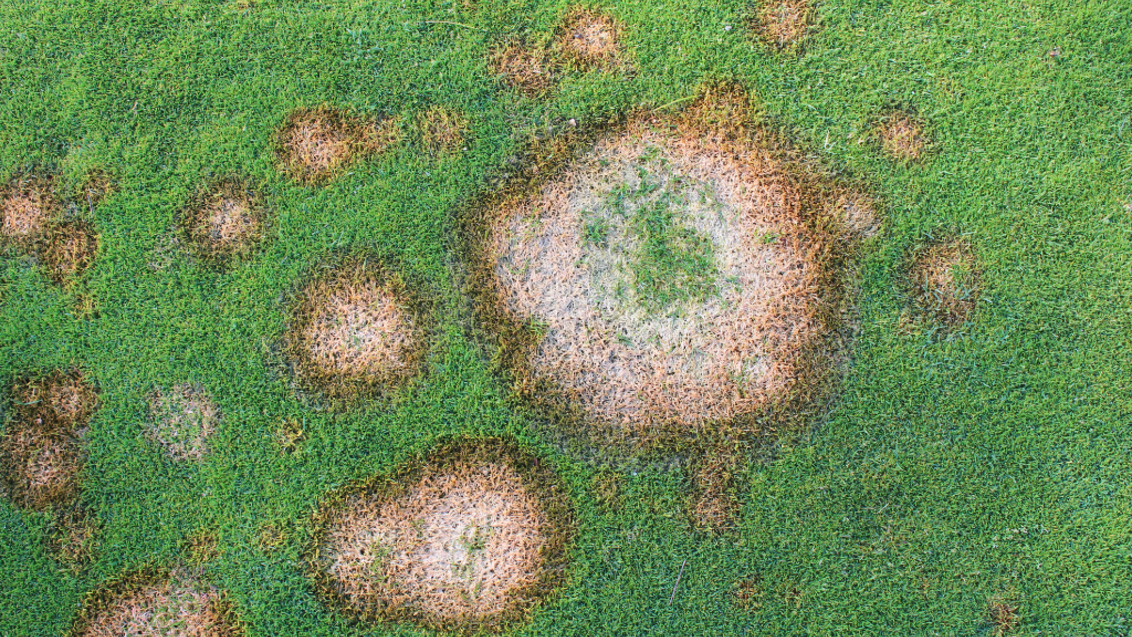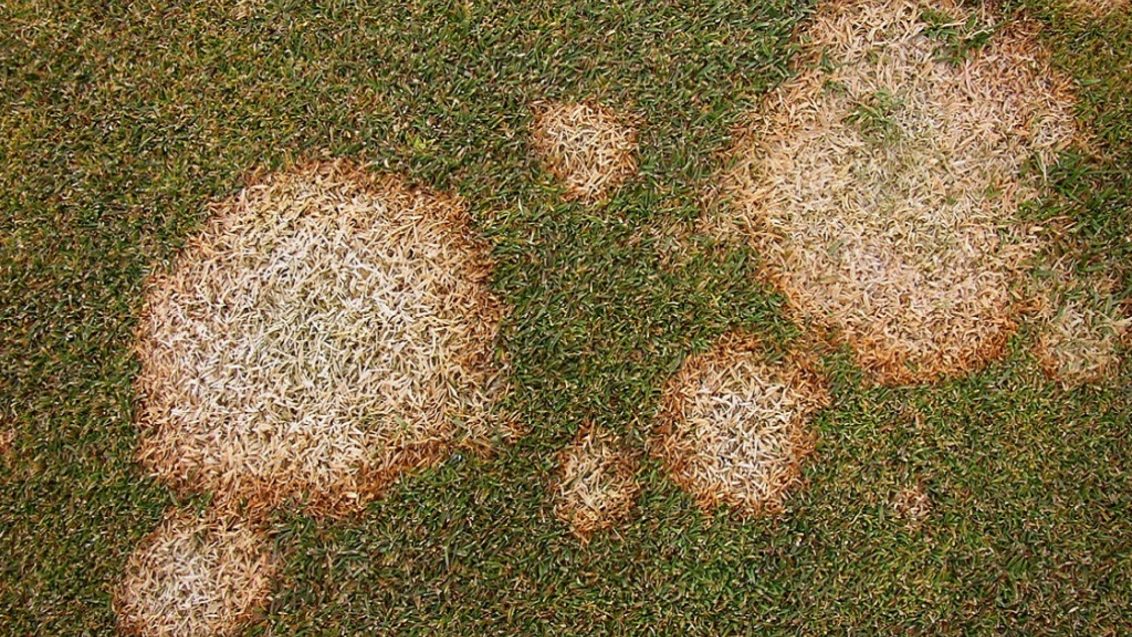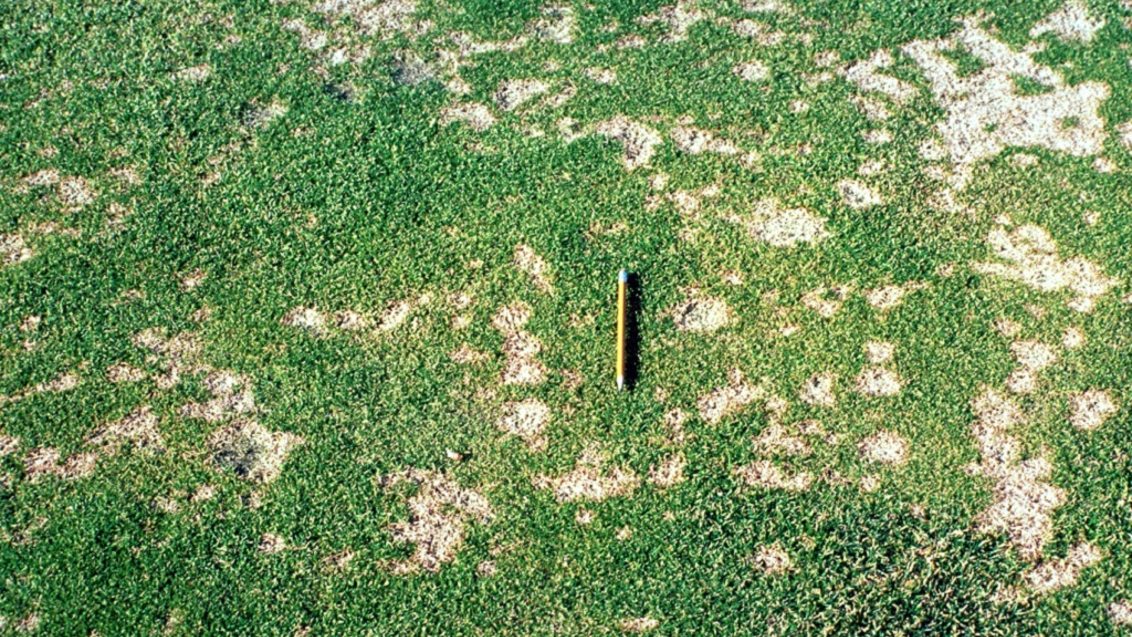Winter Fusarium
Microdochium nivale
Disease of Foliage and/or Roots
Susceptible Turf
Winter Grass, Bent Grass, Fescue, Ryegrass and Kentucky Blue Grass
Symptoms
- Circular patches appear as small, water-soaked spots less than 5 cm in diameter.
- Patches change in colour from orange-brown to dark brown and finally to a light gray.
- Spots may enlarge indefinitely, but are usually less than 20 cm in diameter.
- On low-cut turfs, ring like patches "smoke rings" may appear, the outer ring of the patch may have a water-soaked, greenish black margin.
- In very wet conditions a thin to fluffy covering of white mycelium may be seen on matted leaves.
- The mycelium is white, but on exposure to sunlight induces spore production which is a pink colour.
Conditions Favouring Disease
- More than 10 hours a day of foliar wetness for several consecutive days.
- Cool temperatures.
- Soil high in nitrogen fertility and low phosphorous and potassium.
- Areas with slow growing conditions and heavy thatch.
Management Tips
Maintain balance fertility.
Avoid using lime. Alkaline soils enhance disease development.
Maintain low soil pH.
- Use slow release fertilisers when fertilising in autumn.
- Increase air circulation to speed turf's drying process.
- Minimise the amount of shade.
- Avoid excessive thatch.
General Comments
Symptoms are evident from May to September in the southern states of Australia.



